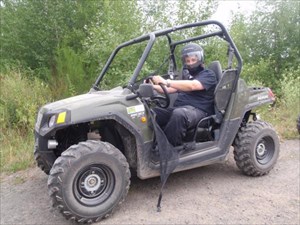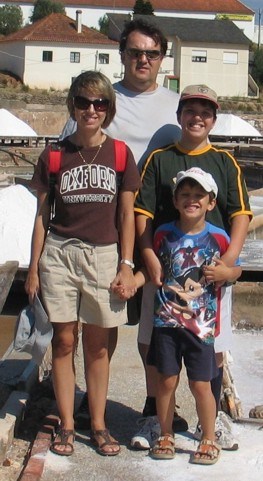PICO DO ARIEIRO

A Ilha da Madeira é um topo de um vulcão que se ergue cerca de 6 km (3,7 milhas) a partir do fundo do Oceano Atlântico, na Serra Tore localizada debaixo de água. O vulcão formou-se em cima de uma fenda orientada Este-Oeste na crusta oceânica ao longo da Placa Africana, e iníciou-se durante a época do Miocénico há mais de 5 milhões de anos, continuando no Plistocénico até cerca de 700 mil anos ago. Foi seguido por extensa erosão, produzindo dois anfiteatros grandes abertos para sul na parte central da ilha. Mais tarde a actividade vulcânica é retomada produzindo cones de escórias e fluxos de lava no topo do escudo mais erodido. As erupções vulcânicas mais recentes deram-se na parte centro-oeste da ilha há apenas 6500 anos atrás, criando mais cones de cinza e lava.
A Ilha da Madeira representa 93% da área do arquipélago, com 90% do território acima de 500 m. É a maior ilha do grupo com uma área de 741 km2 (286 milhas quadradas), um comprimento de 57 km (35 milhas) (from the Ponta de São Lourenço to the Ponta do Pargo) e cerca de 22 km (14 milhas) no seu ponto mais largo (from Ponta da Cruz to Ponta de São Jorge). Tem uma costa com 150 km (93,21 milhas) e uma cadeia de montanhas que se estende ao longo do centro da ilha, atingindo 1862 metros (6107 pés) no seu ponto mais alto (Pico Ruivo). Os focos vulcânicos primitivos responsáveis pela área montanhosa central, consistiu nos picos distinctos: Ruivo (1862 metros), Torres (1851 metros), Areeiro (1818 metros), Cidrão (1.802 metros), Cedro (1.759 metros), Casado (1725 metros ), Grande (1657 metros) e Ferreiro (1582 metros). No final desta fase eruptiva a ilha foi rodeada por recifes evidenciada por vestigios marinhos numa camada calcárea na área de Lameiros, em São Vicente (que mais tarde foi explorada para a produção de óxido de cálcio). Falésias, como a do Cabo Girão, vales e ravinas que se estendem a partir desta coluna central literalmente tornam o interior dificilmente acessível. O Pico do Areeiro, com 1818 metros de altura (5965 pés), é o terceiro mais alto da Ilha da Madeira. O trilho que ruma ao Pico Ruivo é uma importante atracção turística, com uma média diária de mil turistas a caminhar neste percurso. Existe um bom acesso rodoviário para o Pico e um grande parque de estacionamento amplo tal como um restaurante e uma loja de lembranças.
A cache:
Primeiro estágio:
Nas coordenadas N 32.44.129 / W 016.55.721 vai encontrar um painel informativo

Painel informativo
Pergunta nº 1:
Qual é a segunda palavra da primeira linha?
Pergunta nº 2:
Quais são os 4 algarismos na segunda linha?
Segundo estágio
Depois de ter visitado o painel informativo, dirija-se para a plataforma de observação em
N 32.44.353 / W 016.56.014
A caminho vai passar pelo local indicado na foto em baixo.

procurar o local indicado
Pergunta nº 3:
Descreve a cor da camada de basalto indicada pela seta na imagem.
Pergunta nº 4:
Por favor toca na rocha desta camada e indica se é compacta/sólida ou frágil.
Pergunta nº 5:
O caminho para a plataforma acaba numa curta escada. Quantos degraus tem esta escada?
Pergunta nº 6:
Nesta plataforma existe novo painel informativo que menciona um pássaro endémico à Madeira. Este é uma das espécies de ave marinha em via de extinção: qual o seu nome latim?
Para logarem um found nesta cache têm que enviar todas as respostas às seguintes perguntas através do meu perfil identificando a cache pelo seu nome ou referência.
Não é obrigatório esperarem pela confirmação das respostas correctas mas logs que não cumpram os requesitos estipulados, podem ser apagados sem aviso prévio.
Atenção:
1:
Não coloquem imagens que dêm as respostas a qualquer das perguntas.
2:
Não saiam do trilho a caminho da plataforma de observação. Este percurso deve levar aproximadamente 30 minutos e devem assegurar-se que estão de plena saúde para caminhar a estas altitudes. Se optarem, podem continuar até ao Pico Ruivo por este trilho. Este trilho pode estar ocasionalmente fechado no invero.
3:
A procura desta cache pode envolver risco pessoal e patrimonial. Devem sempre consultar o boletim meteorológico antes de efectuarem a vossa caminhada.
De forma alguma o proprietário desta cache será responsável por quaisquer danos directos, indirectos consequentes da procura desta cache.

The island of Madeira is at the top of a massive shield volcano that rises about 6 km (3.7 mi) from the floor of the Atlantic Ocean, on the Tore underwater mountain range. The volcano formed atop an east-west rift in the oceanic crust along the African Plate, beginning during the Miocene epoch over 5 million years ago, continuing into the Pleistocene until about 700,000 years ago.This was followed by extensive erosion, producing two large amphitheatres open to south in the central part of the island. Volcanic activity later resumed, producing scoria cones and lava flows atop the older eroded shield. The most recent volcanic eruptions were on the west-central part of the island only 6,500 years ago, creating more cinder cones and lava flows.
Madeira Island represents 93% of the archipelago's area, with 90% of the landmass above 500 m. It is the largest island of the group with an area of 741 km2 (286 sq mi), a length of 57 km (35 mi) (from Ponte de São Lourenço to Ponte do Pargo), while approximately 22 km (14 mi) at its widest point (from Ponte da Cruz to Ponte São Jorge), with a coastline of 150 km (93.21 mi). It has a mountain ridge that extends along the center of the island, reaching 1862 meters (6,107 ft) at its highest point (Pico Ruivo), while much lower (below 200 meters) along its eastern extent. The primitive volcanic foci responsible for the central mountainous area, consisted of the peaks: Ruivo (1862 meter), Torres (1851 meter), Areeiro (1818 meter), Cidrão (1802 meter), Cedro (1759 meter), Casado (1725 meter), Grande (1657 meter), Ferreiro (1582 meter). At the end of this eruptive phase, an island circled by reefs was formed, its marine vistiges are evident in a calcierous layer in the area of Lameiros, in São Vicente (which was later explored for calcium oxide production). Sea cliffs, such as Cabo Girao, valleys and ravines extend from this central spine, making the interior generally inaccessible.
Pico do Arieiro, at 1818 meters high (5965 feet), is the Madeira Island's third highest peak.The footpath northwards towards Pico Ruivo is an important tourist attraction, with a daily average of 1000 tourists trekking on it.
There is easy road access to the summit, with a large car park and a restaurant and souvenir shop
The Cache :
FIRST STAGE
At N 32.44.129 / W 016.55.721 you will find some kind of information board.

Information Board
QUESTION 1:
Please advise the second word in the first line.
QUESTION 2:
Please advise the four figures mentioned in the second line.
SECOND STAGE
After you visited the information board and the peak, please continue your way to a observation platform at N 32.44.353 / W 016.56.014.
On the way to the platform you will pass by the place shown in below picture.

Find this place
QUESTION 3:
Please describe the colour of the basalt layer marked with an arrow on the picture.
QUESTION 4:
Please touch the layer and describe, wether you judge the formation to be rather compact / solid or fragile.
QUESTION 5:
The way to the platform ends at some stairs. Please advise how many stairs lead to the platform.
QUESTION 6:
At the platform you will find a information board informing you about a bird, which is endemic to Madeira. It is Europe's most endangered seabird, restricted to a few ledges high in the central mountains of Madeira.Please advise the latin name of the bird mentioned on the board.
To claim credit for this cache, please mail the replies for all of the above mentioned questions to me through my GC profile.
You do not need to wait for log permission, however, logs not meeting the requirements may be deleted without advance notice. Logs showing pictures that do give hints to one of above questions will be deleted without prior notice.
ATTENTION :
1:
Please do not post any pictures, that give hints to the questions above
2:
Please do not leave the path/trail from the peak to the observation platform. The path itself should be ok to walk, as it is build out with stairs/steps, etc.
The way to the observation platform and back to the peak will take about 30 minutes and you should make sure by yourselve, that you are in good health and condition to do such a walk in this high mountain area. You can also continue your way up to Pico Ruivo from here.
The way might be closed during winter time.
3:
Looking out for this cache may involve risk to both persons and property. There are many variables including, but not limited to, weather, fitness level and outdoor experience, that must be considered prior to seeking this cache. Be prepared for your journey and be sure to check the current weather and conditions before starting your search. Always exercise common sense and caution.
In no way shall the owner be liable for any direct, indirect, punitive, or consequential damages arising out of the search for this cache.
HAPPY HUNTING !
Schroedefix, danieloliveira & Street Bob
A Cache by


 Schroedefix danieloliveira Street Bob
Schroedefix danieloliveira Street Bob